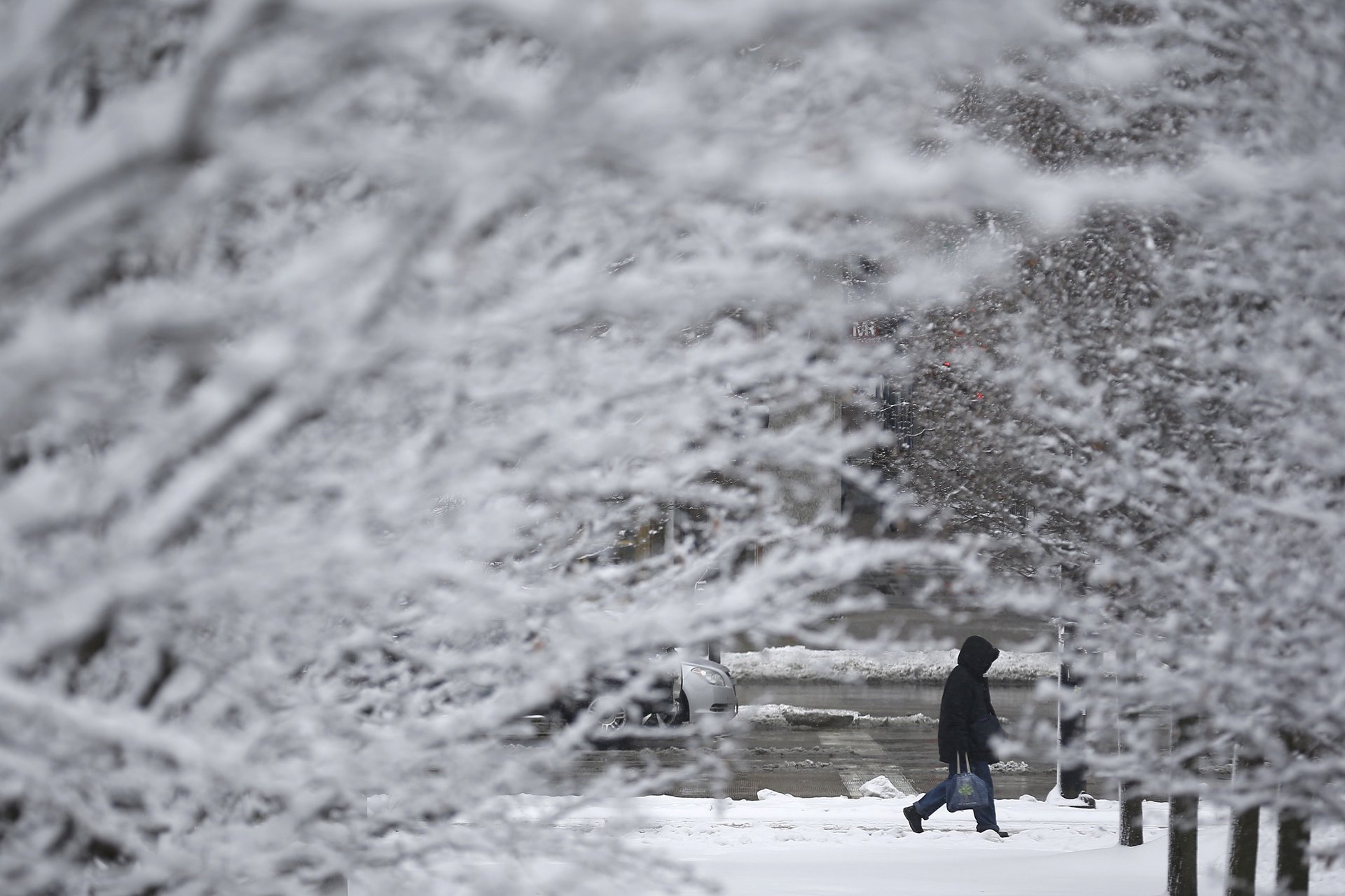What Trump’s tweet on freezing midwest temps gets wrong about climate change
In much of North America, it is very cold today. It’s so cold, in fact, that Chicago may record some of its lowest temperatures ever tonight, dipping down to -20°F (-29°C). What’s more, temperatures have dropped so low that they’ve confused the president of the United States into tweeting a scientifically misguided argument against climate change.


In much of North America, it is very cold today. It’s so cold, in fact, that Chicago may record some of its lowest temperatures ever tonight, dipping down to -20°F (-29°C). What’s more, temperatures have dropped so low that they’ve confused the president of the United States into tweeting a scientifically misguided argument against climate change.
The truth is that neither “Global Waming,” global warming, nor climate change means that it will never be cold again. “Climate change does not eliminate winter,” explains Barbara Mayes Boustead, a meteorologist instructor at the US National Weather Service.
In fact, recent research suggests that climate change can cause extreme-cold weather events like Winter Storm Jayden, which has descended on North America this week. Extreme cold in the eastern part of North America is correlated with Arctic warming, according to a 2018 paper published in Nature Communications. Jennifer Francis, a senior scientist at the Woods Hole Research Center and one of the study’s authors, explained how it could work in a post for The Conversation this morning.
Normally, there are big differences between the temperature and atmospheric pressure of the air in the Arctic and the air in the lower latitudes of the Northern Hemisphere. These differences create a jet stream, a band of wind that circles the Earth all year round, and the dreaded polar vortex—a whirling jet of cold air that rings the North Pole and generates a lot of media coverage.
Climate change has caused the Arctic to warm—and it’s heating up much faster than the rest of the globe. As a result, the temperature and pressure differences between the Arctic and the rest of the Northern Hemisphere have shrunk, causing the jet stream to slow down and wobble.
When the jet stream meanders off-course, it can bend toward the south, bringing frigid Arctic winds down to North America. The wayward jet stream can also disrupt the polar vortex, which sends eddies of cold air down south, too.
To be clear, this isn’t settled science. Researchers are still working to understand how all the interrelated mechanisms of Earth’s climate fit together to create local weather patterns. Francis admits that “this is a relatively new hypothesis that is not yet widely accepted by climate scientists.”
But Mayes Boustead says the evidence gathered so far is compelling. “We understand there is an effect of climate change on the behavior of the jet stream and the polar vortex, but we don’t fully understand how it all works,” she says. “What we have right now is a puzzle with enough of the pieces together to make out what the picture will look like, but we still don’t have all the details.”
In any case, weather does not equal climate change. “Extreme cold weather events are not incompatible with climate change,” says Becky Bolinger, a climatologist at Colorado State University. “I’m not sure that they’re increasing in frequency because of climate change, but they’ll certainly still happen in spite of climate change.”
The important thing to remember, if you’re shivering in the eastern part of North America and wondering what the hell is going on with global warming, is that the extreme cold you’re experiencing is local. Right now, Alaska and Greenland are unusually warm. In the southern hemisphere, Australia is experiencing an extreme heat wave, with temperatures soaring above 40°C (104°F). And 2018 is expected to rank as the fourth-hottest year ever recorded.
“The climate system is complicated, but I think most people are starting to realize that extreme weather of all sorts—even cold spells—are stronger and more frequent because of climate change,” says Francis.